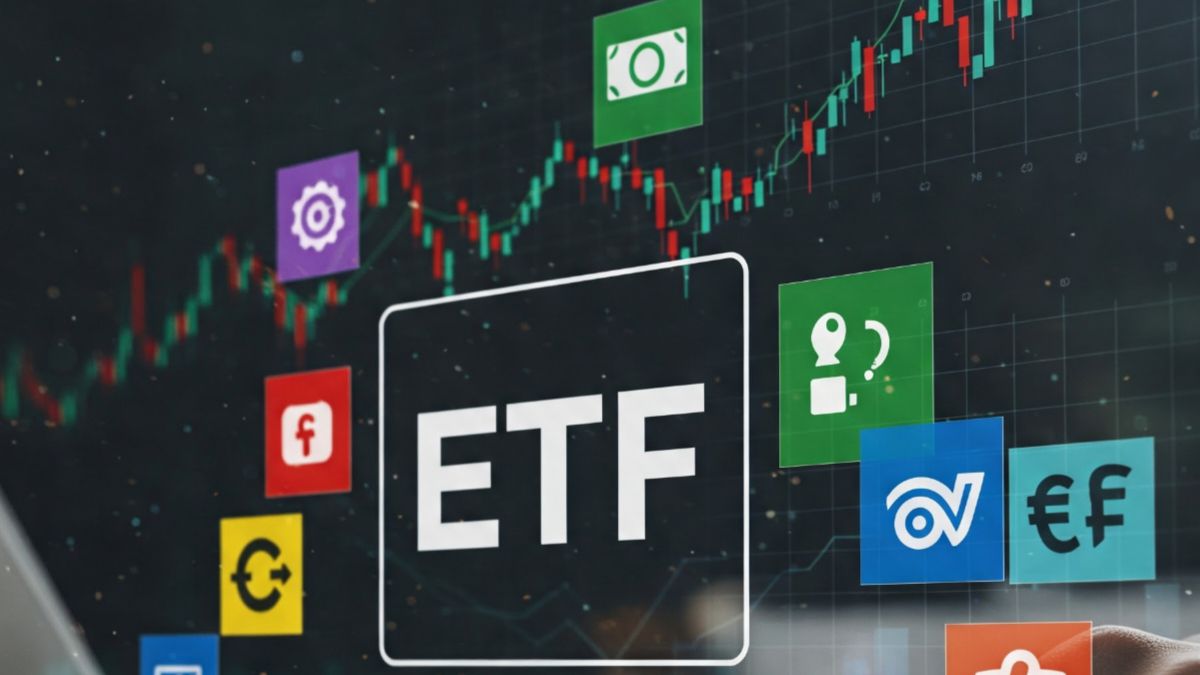A crypto ETF (exchange-traded fund) is a type of financial product that allows investors to gain exposure to cryptocurrencies without directly owning or managing the assets. It is essentially a fund that holds cryptocurrencies or related assets, and it is traded on traditional stock exchanges just like stocks or other ETFs. Here is a full explanation of what a crypto ETF is and how it works.
What is an ETF?
An ETF is a type of investment fund that holds a basket of assets such as stocks, bonds, commodities or even cryptocurrencies, and it is traded on stock exchanges. The main feature of an ETF is that it allows investors to diversify their portfolio by investing in a variety of assets through a single stock. ETFs are designed to track the performance of a specific index or asset class.
What is a crypto ETF?
A crypto ETF is an exchange-traded fund that invests primarily in cryptocurrencies such as Bitcoin, Ethereum or other digital assets or companies related to cryptocurrencies. The main goal is to provide investors with exposure to the crypto market without requiring them to buy or store cryptocurrencies. The ETF holds digital assets or futures contracts that track the price of cryptocurrencies, and shares of the ETF are traded on traditional stock exchanges.
Types of Crypto ETFs
There are different types of crypto ETFs, depending on the assets they hold and how they track the cryptocurrency market:
Physical crypto ETFs: These funds directly hold cryptocurrencies such as Bitcoin or Ethereum. When an investor buys shares of the ETF, they essentially own a portion of the underlying cryptocurrencies, although they do not have direct access to them.
Futures-based crypto ETFs: These ETFs invest in cryptocurrency futures contracts rather than investing in cryptocurrencies directly. Futures contracts are agreements to buy or sell cryptocurrencies at a future date at a predetermined price. This type of ETF is typically found in markets where direct cryptocurrency trading is restricted.
Blockchain ETFs: While not directly holding cryptocurrencies, these ETFs invest in companies that are involved in the blockchain and cryptocurrency sector, such as mining companies, cryptocurrency exchanges or technology firms developing blockchain solutions.

How do crypto ETFs work?
Crypto ETFs work in a similar way to traditional ETFs:
Buy and hold: The ETF holds the underlying cryptocurrency or portfolio of cryptocurrencies either directly or through futures contracts.
Share traded: Investors can buy and sell shares of the ETF on a stock exchange, just like stocks. The price of these shares fluctuates based on the performance of the underlying assets.
Risk without ownership: Investors don’t have to worry about managing wallets, private keys or dealing with the complexities of crypto exchanges. They gain exposure to the cryptocurrency market through a traditional brokerage account.
Advantages of Crypto ETFs
Access: Crypto ETFs make it easier for traditional investors to access the cryptocurrency market without having to deal with the complexities of buying, storing, or securing digital assets.
Liquidity: ETFs are traded on traditional stock exchanges, making them highly liquid. Investors can buy or sell shares at any time during market hours.
Regulation: Crypto ETFs are subject to regulation by financial authorities (e.g., the SEC in the U.S.), which provides a level of oversight and protection for investors compared to unregulated crypto exchanges.
Diversification: By investing in crypto ETFs, investors can gain exposure to a variety of cryptocurrencies or blockchain-related companies, which can help diversify their portfolios.
Disadvantages of Crypto ETFs
Fees: Crypto ETFs may charge management fees, which can reduce returns over time.
Tracking error: The performance of an ETF may not fully reflect the price movements of the underlying cryptocurrency due to factors such as management fees, liquidity issues or market volatility.
Regulatory uncertainty: The regulatory landscape for cryptocurrencies is still evolving, and there may be changes that impact the performance or even legality of certain crypto ETFs.
How to invest in a crypto ETF
To invest in a crypto ETF, you need to follow the same process as buying stocks or other ETFs:
- Open a brokerage account with a platform that supports ETF trading.
- Research available crypto ETFs and choose one that aligns with your investment goals.
- Place an order to buy shares of the chosen ETF.
- Monitor the ETF’s performance and decide when to buy or sell.
Is Pepe Coin the Next Big Thing in Crypto Market
Popular Crypto ETFs
Some well-known examples of crypto ETFs include:
ProShares Bitcoin Strategy ETF (BITO): A bitcoin futures ETF that gives investors the opportunity to learn about bitcoin’s price fluctuations.
Grayscale Bitcoin Trust (GBTC): While not technically an ETF, this trust works similarly by offering investors the opportunity to learn about bitcoin without direct ownership.
VanEck Bitcoin Strategy ETF (XBTF): Another bitcoin futures ETF that aims to give investors the opportunity to learn about bitcoin’s price through futures contracts.
Regulatory Considerations
Crypto ETFs have faced challenges with regulators in several countries. For example:
In the US, the SEC has been cautious in approving bitcoin ETFs due to concerns about market manipulation and volatility of cryptocurrencies. However, bitcoin futures ETFs like the ProShares Bitcoin Strategy ETF have been approved.
In other countries, such as Canada, there has been approval for direct cryptocurrency ETFs, allowing investors to hold Bitcoin and Ethereum through these funds.
Conclusion
Crypto ETFs offer traditional investors a convenient, regulated and accessible way to gain exposure to cryptocurrencies without the complexity of direct ownership. However, like any investment, there are risks involved, including volatility, fees and regulatory uncertainties. If you are considering investing in a crypto ETF, it is important to understand how it works, what the specific risks involved are and how it fits into your overall investment strategy.







One thought on “What is a Crypto ETF and How Does It Work? A Complete Guide”